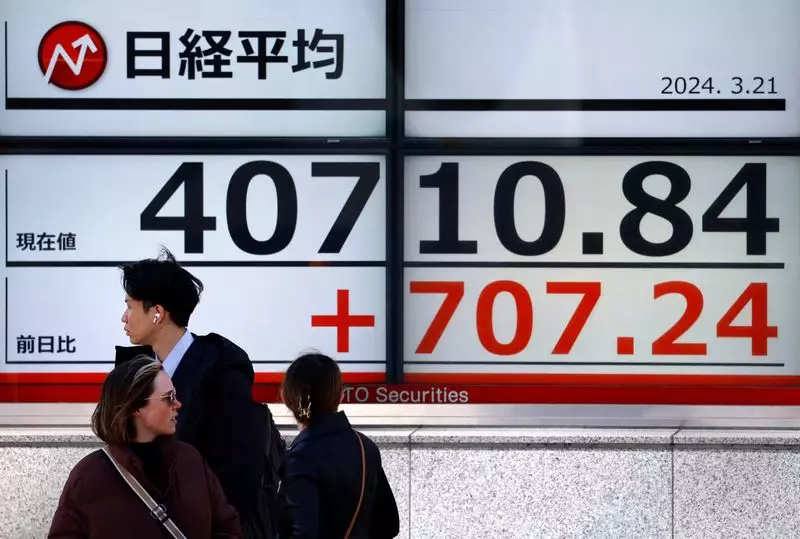The recent retaliatory attack by Iran on Israel has sent shockwaves through global markets, with Asian shares plummeting and gold prices surging. The fear of a broader regional conflict erupting in the Middle East has left traders on edge and uncertain about the future. The dollar has reached a 34-year high against the yen, reflecting growing concerns about inflationary pressures in the United States and the potential impact on interest rates.
The cautious sentiment in the markets was evident as MSCI’s broadest index of Asia-Pacific shares outside Japan fell by 0.7%. Japan’s Nikkei, Australia’s S&P/ASX 200 index, and Hong Kong’s Hang Seng Index all recorded significant losses in response to the escalating tensions in the Middle East. The threat of open warfare between Iran and Israel, and the possibility of the United States being dragged into the conflict, has created a sense of uncertainty and unease in the region.
The geopolitical tensions have triggered a flight to safety, leading to a surge in gold prices and a rise in the value of the US dollar. Gold prices increased by 0.51% to $2,356.39 an ounce, while the dollar strengthened further, extending its gains from the previous week. However, oil prices remained relatively stable, as traders had already factored in the possibility of a retaliatory attack from Iran. Brent crude futures peaked at $92.18 a barrel last week, but were last seen at $90.01 per barrel in response to the news.
Global Economic Impact
Neil Shearing, group chief economist at Capital Economics, highlighted the key risks for the global economy amidst the escalating tensions in the Middle East. The potential for a broader regional conflict and its impact on energy markets could complicate efforts to bring inflation back to target in advanced economies. Any significant rise in oil prices may influence central bank decisions, especially if higher energy prices start to affect core inflation rates.
US Stock Futures and Rate Expectations
US stock futures saw a slight uptick following a heavy selloff on Wall Street, as results from major US banks failed to impress investors. Geopolitical headlines and uncertainty surrounding the global outlook have contributed to higher volatility in the markets. Meanwhile, US Treasury yields held near their recent highs, as traders revised their expectations of rate cuts from the Federal Reserve this year. Resilient economic data, including a hotter-than-expected inflation report, has led to the belief that US rates could remain higher for longer than anticipated.
Revised Rate Forecast and Impact on Currencies
The updated forecasts for the US Federal Open Market Committee (FOMC) now suggest a delayed start to the interest rate cutting cycle, pushing it to September 2024. Stronger than expected US Consumer Price Index (CPI) readings have influenced this decision, as the Fed waits for consecutive inflation prints of 0.2% per month or lower to signal sustainable lower inflation levels. The shift in rate expectations has propelled the US dollar to a 34-year high against the yen, with the euro and sterling also hovering near five-month lows.
The changing rate environment has interrupted bitcoin’s impressive rally, as the cryptocurrency fell by more than 2% to $65,536 after reaching record highs. Expectations of imminent Fed cuts and the launch of new spot bitcoin exchange-traded funds had driven bitcoin’s surge earlier this year. However, the shift in rate expectations and the focus on inflation may impact bitcoin’s future performance.
The escalating tensions in the Middle East have reverberated through global markets, impacting asset prices, currency values, and investor sentiment. The uncertainty surrounding the region and its potential implications on the global economy highlight the interconnectedness of geopolitical events and financial markets. Traders and investors must remain vigilant and adaptable in response to evolving geopolitical risks and their impact on market dynamics.

